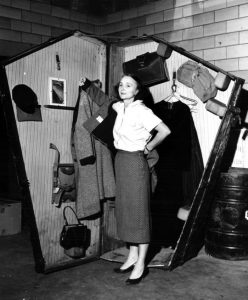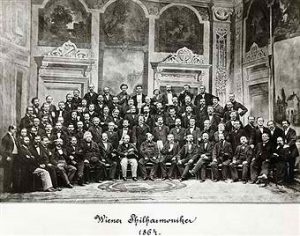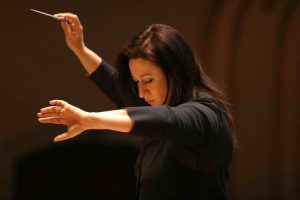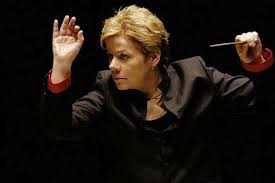Women Musician’s Contribution to Symphony Orchestras
2017-10-18



 Uncategorized
Uncategorized

Before we talk about the great women in the world of the symphony orchestra, we must first understand that before the 20th century, a symphony orchestra is an all-male group. It was according to tradition during that particular period that women are not allowed in orchestras. There are several factors involved in the attitude of rejecting women in the orchestra which upholds it for many years. Women musician’s potential and remarkable talent in music began to come out when this attitude starts to change after the 20th century. Women began to prove their worth and established their great significance in the field of classical music, maintaining and upholding its standard to its highest level through their contribution and impact.
During the 18th century, we can find women excelling in religious performances and writings. Many women started to learn how to play musical instruments, sing and compose music during the 18th and the 19th century. Women like Clara Schumann a pianist and composer, and the singer Jenny Lind became popular during the 19th century because of their remarkable talent in composition, singing and playing the piano. Schumann’s career as a pianist provided her with a steady income. She was able to have numerous concert tours which makes her more famous. Added to that, she would bring her compositions and play them in her concerts.

Alice Chalifoux (principal harpist 1931-74) one of the challenging experience was using her harp case as a dressing room because of the absence of women’s dressing room in Orchestra Halls.
It was also during the 19th century in America where women began to include music as part of their educational study. However, this particular education along with the skills acquired is only reserved for home and social purposes. The public musical performance was still exclusive just for men during those times. Finally, their minds were opened and changed when they saw professional women musicians who came from Europe performed music on concerts they conducted in America. They began to open doors for women to play and display their musical skills in public. But that’s not all. During the second half of the 19th century, women can pursue professional level on a particular musical skill that they have. Thanks to the music teachers and conservatories that started to teach and train women who are determined to become professional musicians.
Women power in the field of music continues to rise after that period. Women orchestras are formed. The women’s orchestra in Berlin was one of them. This orchestra was founded in 1898 by Mary Wurm who is also the conductor. Wurm was a student of Clara Schumann. Since then, Europe and America continue to produce more women orchestra which provides opportunities for women musicians to showcase their talents and skills.
A lot of changes have occurred as women began to flourish in the field of music. However, men and women have not played together since the symphony orchestra came into existence, not until 1913. For the first time, men and women joined and played together in a major orchestra when Sir Henry Wood hired six women violinist to join the Queen’s Hall Orchestra in 1913, an orchestra he conducted since 1895. Since then, women continue to join the orchestra which increased up to a number of 14 women musicians in 1918. Just like other musicians in the different parts of Atlantic, Sir Henry believed that women are suited only for playing the violin but not double bass, trombone, and other large instruments.
The good news is that the women’s position in the symphony orchestra is improving. In 1930, the position for harpist was vacant in the Philadelphia Orchestra. So they opened for an audition and Edna Phillips (1907-2003) came in and auditioned which turned out to be successful. Leopold Stokowski (orchestra’s conductor) admitted Philips. It was the first time in the history of America’s major orchestra that a woman occupied the principal position. Philadelphia orchestra was described by Sergei Rachmaninoff as “the finest orchestra the world has ever heard,” in line with New York Philharmonic, Chicago Symphony, and Boston Symphony which were also considered the world’s best.

Edna Phillips (American Harpist, January 7, 1907 – December 2, 2003) First Female musician of the Philadelphia Orchestra
It was not easy at first for Philips to be part of an orchestra composed of musicians that are all men. Not only that she was the only woman in the group, but the position where she was hired was previously occupied by a male harpist who had been in the orchestra for seventeen years. The male harpist was famous and a favorite of many. That is why Philips experienced resentment from other male orchestral members. They consider her to be on their way and an unwelcome presence. But despite the difficulty, Philips persevered and remained with the orchestra with a professionalism that no one can question. Philip’s unquestionable professionalism paid off. She became one of the professors in the Philadelphia Conservatory of Music. She was also commissioned by Norman Dello Joio and Alberto Ginastera (famous composers during their time) and her husband to create several compositions for harp.
One of the most prominent yet very strong when it comes to restricting women in the orchestra is the Vienna Philharmonic. Since the orchestra stated in 1842, not a single women have ever entered as a full-time member. But the long years of restriction was over when Anna Lelkes came in and became the first female to join the orchestra 1997. But it was not very easy for Lelkes. Before Lelkes became fulltime, she was already in the orchestra but only as an unofficial member. She did receive payments but she was not acknowledged in public as part of the team, even her name is nowhere to be found in the program.
She was even petitioned to oust by some men in the group who brought up their concerns regarding admitting women in the team. They said that the presence of a woman would degrade the musical standard of the orchestra. The group cast votes to settle the concerns and the result were in favor of accepting women to be part of their ranks.

1864 photo of Vienna Philharmonic
The road towards becoming an official fulltime Vienna Philharmonic member is not as easy as auditioning on a talent show. The applicant will not just show off their remarkable talents and presto! You hit the spot! That now how things actually work. The applicant must first audition and become a member of Vienna State Opera Orchestra. However, once the applicant passes the audition, the musician must remain in the Opera Orchestra for three years. Only then can the musician be qualified to apply for Vienna Philharmonic membership. There are no other options for this because the Vienna Philharmonic will only select members coming from Vienna State Opera Orchestra.
Lelkes underwent the same procedure before entering the Vienna Philharmonic. She had to become a member of Vienna State Opera which lasted from 1971 to 1974. After that, she entered Vienna Philharmonic but only as an adjunct member. She remained in that position from 1974 to 1997. It took 23 years before she was accepted and become a fulltime and official member of the orchestra.
Eight years after, the Vienna Philharmonic had a guest female conductor for the first time. Simone Young, an Australian-born conductor, conducted the orchestra in 2005. Amazingly, it seems like what Lelkes underwent. Before Simone conducted the Vienna Philharmonic in 2005, she conducted the Vienna State Opera in 1993. Simone achieved an outstanding record as a world-renowned conductor.

Another world renowned female conductor named Marin Alsop. Alsop is an American conductor distinguished by her strong leadership as she was acknowledged and appointed as the first female full-time leader by a major orchestra in the United States. Her outstanding leadership was experienced by the Baltimore Orchestra since 2007 as their music director. She also led and directed the Sao Paolo Symphony Orchestra and California’s Cabrillo Festival.
A classical music concert entitled Last Night at the Proms had Alsop as their first female conductor in 2013. The concert was presented by BBC which was formally called The Henry Wood Promenade Concerts. The performance is every day covering a period of eight weeks. What was interesting is that Henry Wood was the first to allow women in 1913 to join the Queen’s Hall Orchestra where he was the conductor.

It was undeniable that women have significant contributions in the symphony orchestra. However, we are also aware of the difficulties they’ve undergone before they reached the state they have right now. This article was not intended to criticise or undermine the traditions we had with our symphony orchestras in the past. Instead, it was intended to inspire women musicians of today as they look at the lives of these women who have overcome the barriers and achieved professionalism and success in their music career.

Leave a Comment